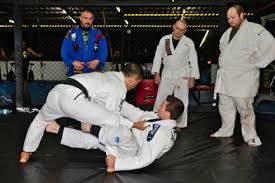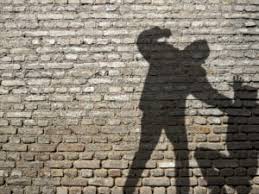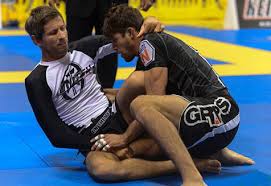I have a weird type of OCD.
It is not something that comes up all the time, only in occasional odd places. One of those is when an idea gets planted in my head that leads to a next idea, and then I have to pursue that line at all costs. Case in point was this past week where I found some old training journals and thumbed through them. I found where I started formally training Brazilian Jiu-jitsu, among other tidbits. And then a little voice in my head said “what if you could find your very first teaching certificate?” and the OCD race was on.
I did not find the exact cert, but I did find the journal entry for the first time I officially taught someone as an instructor. That was August 29, 1987 on the campus of Arizona State University. I had just been authorized to teach Jeet Kune Do by my teacher, Paul Vunak, and I had plastered ASU with flyers and within a couple of weeks I had some takers. I made a whopping $10 for the hour lesson!
32 years of teaching and that has almost been non-stop. There was about a two year period after my father passed away where I was working 70+ hours a week to keep the family business going and had zero time to teach so I took a sabbatical from doing so. Outside of that, I have been actively teaching some form of fighting, whether it involved empty hands, knives, stick, firearms, or an integration of all of that dating back to that August ’87 session.
When I started, I SUCKED. I was not a good teacher. I did not understand it, or how to get information across to different people. It took a good while of constant working at it to get to where I now feel I am pretty good (I still need to get better though). Fortunately, outside of charging for private lessons, a good deal of my early teaching was done for free in a training group I organized on campus that later transferred to a Chinese Kung Fu school in east Tempe, so I did not rip off too many people. If I had, I would feel like I should go back and teach them some stuff for free now as a make-good!
I tried to start figuring out how many students I have actually taught, and I can’t get a hard number. Between groups 30+ years ago, assisting some of my instructors like Vunak at large seminars (one seminar I was the lead assistant for had over 120 people that between the main instructor, myself, and the other assistant, we had to spar every single one of them for at least two minutes. That was a longggggg afternoon), doing my own seminars since 2005 and averaging 14-18 per year, multiple tactical conferences (my first appearance at the Rangemaster TacCon in two blocks I had 130 people alone), and teaching at my Professor’s BJJ academy running the Fundamentals class as well as being the main fill in when he is gone since 2010, the closest I can get to any kind of estimate is over 7,000 individual students. It may be more because I was a bit conservative figuring this out, but I don’t think I can get any closer to the definitive number. I certainly have the potential to have done more than that, and maybe have even broken the 10k barrier, but I cannot be sure.
The problem with not keeping better numbers is that I never intended to be an instructor! I was concerned with my own growth in performance and I only thought of that. The single reason I started teaching was that Vunak convinced me that teaching was a good way to get better at my own understanding and performance, so I started with that. Not because I wanted to be a teacher (mostly because I did not think I was good enough or had the time in to take that step) or intended to have any longevity in that, but so I could get better at fighting. So my training logs – especially well into the 2000’s – did not have a ton of entries on the details of my teaching as far as student numbers (most of those entries were about WHAT I taught). Even the first handful of seminars I taught under my own banner seemed to be more of a short time, one or two off type thing, and not something I would be sustaining 15 years later. I wish I was more farsighted and kept better track. But all I can do is estimate.
It is funny to look back now and see the personal growth. I have come to cherish my opportunity to teach. I started with selfish intentions but ended up loving being a coach. The chance to maybe make someone’s life better – even in a tiny, tiny way – is such a blessing that it can be at times breathtaking. I will never be known as the baddest fighter on the planet, but an individual thanking me for teaching them something positive in their life is eminently more satisfying.



